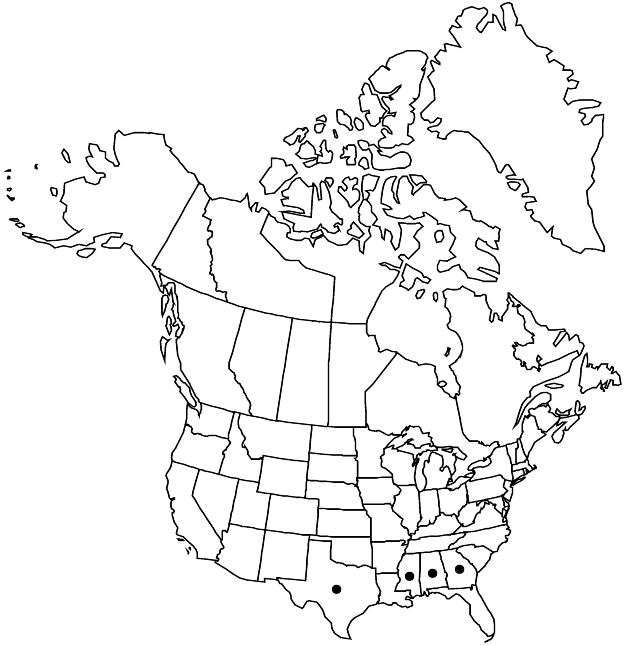Crataegus opima
Biltmore Bot. Stud. 1: 40. 1901.
Shrubs or trees, 70 dm. Stems: twigs: new growth reddish brown, 1-year old blackish brown, older gray; thorns on twigs absent or few to numerous, straight to slightly recurved, 2-years old dark brown to blackish, slender, 2.5–4 cm. Leaves: petiole length 20–30% blade, sparsely short-stipitate-glandular; blade broadly ovate to ± deltate, 3–5 cm, length/width less than 1.5, base cuneate to broadly cuneate, lobes 3 or 4 per side, sinuses shallow in common form, lobe apex usually ± obtuse, angled or not, margins serrate, teeth subacute, veins 4 or 5 per side, apex subacute to obtuse, adaxial midvein sparsely pilose young. Inflorescences 4–7-flowered; branches glabrous or sparsely pilose; bracteoles caducous, sometimes curved, narrowly oblong, membranous to subherbaceous (and green), margins glandular. Flowers 16–18 mm diam.; sepals triangular, 4 mm, distal margins glandular-serrate; anthers cream to pale or deep purple; styles 3–5. Pomes yellow or red, suborbicular, 7–12 mm diam.; sepals on slight collar, erose or reflexed; pyrenes 3–5.
Phenology: Flowering early–mid Apr; fruiting Sep–Oct.
Habitat: Open woods, woodland margins
Elevation: 20–100 m
Distribution

Ala., Ga., Miss., Tex.
Discussion
Crataegus opima is found from southeastern Texas to Georgia.
Crataegus opima comprises the smaller leaved members of the series with proportionately broad leaves and more or less obtuse lobes that are few and shallow. Both red- and yellow-fruited forms are known, as are forms with cream or purple anthers. It is possible that, as elsewhere in the series, these forms should be recognized as distinct taxa, but more information would be required to decide this.
A distinctive local form of Crataegus opina is known with ovate to ovate-trullate leaves 5–8 cm, having 5–7(or 8) veins per side, and 5–8 usually short and sometimes subacute, deeper lobes per side.
Selected References
None.